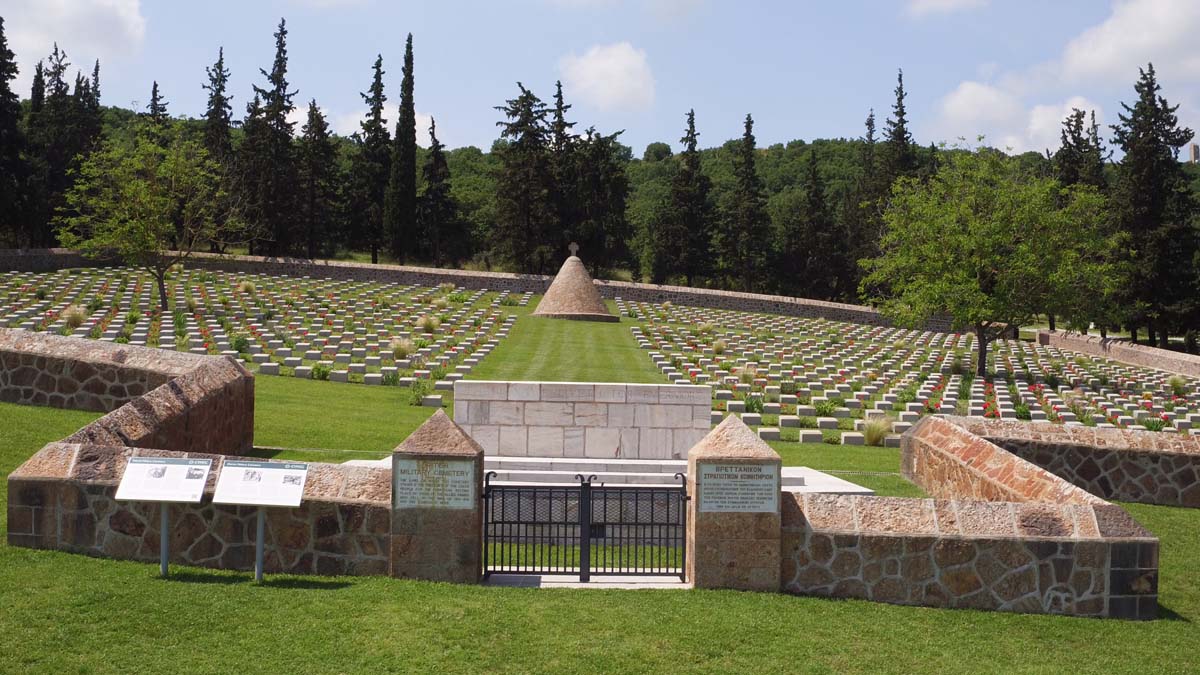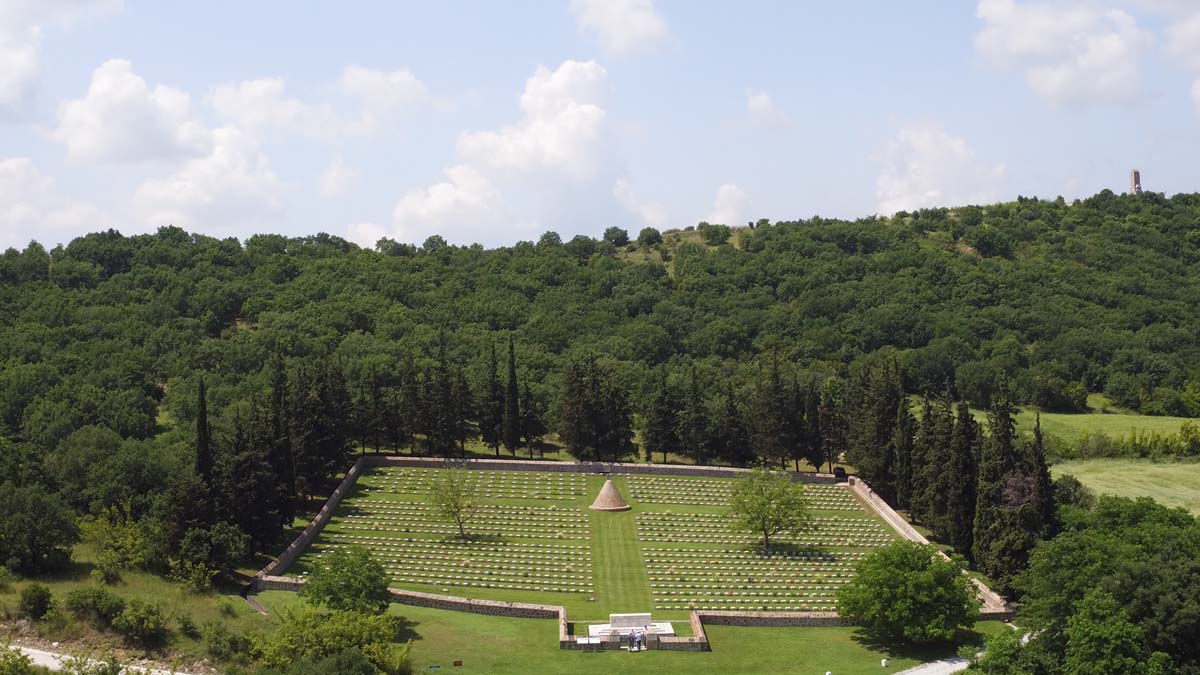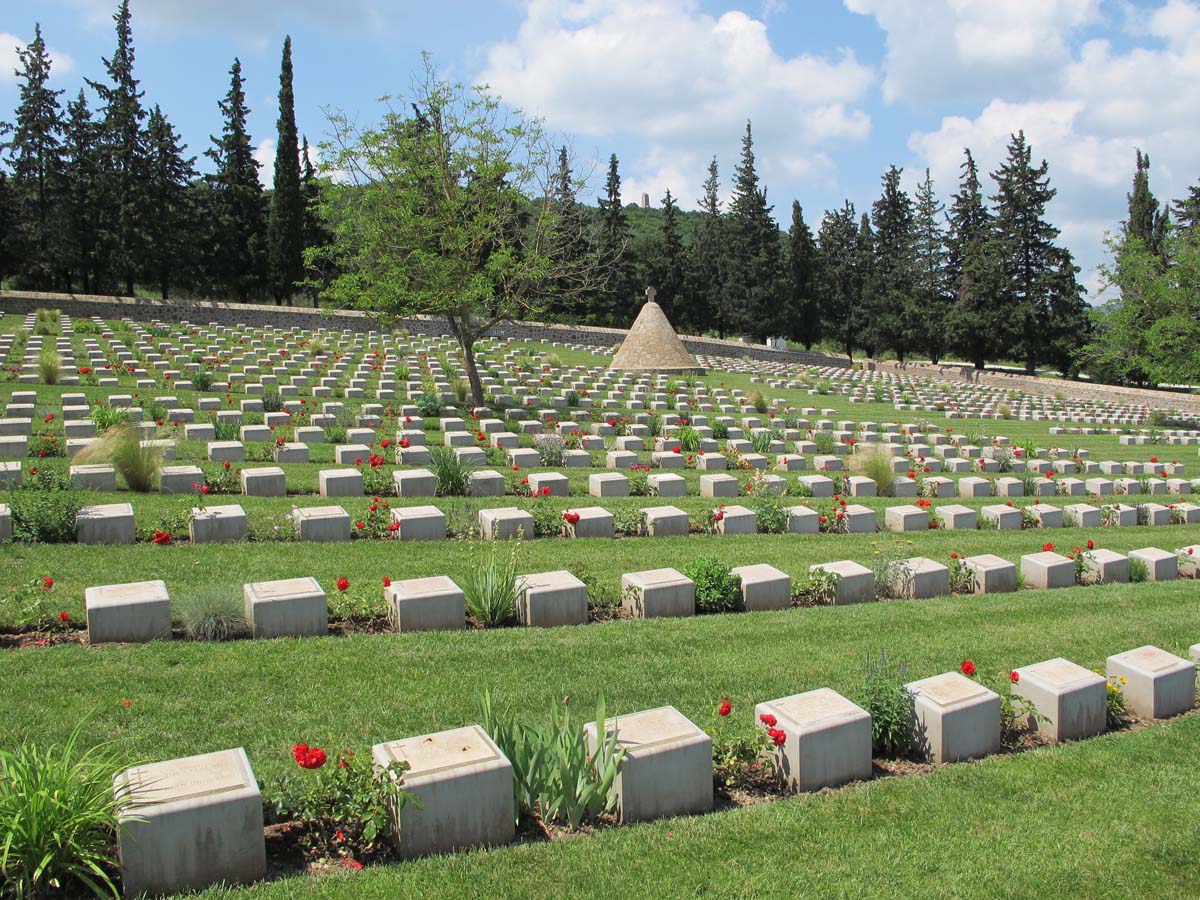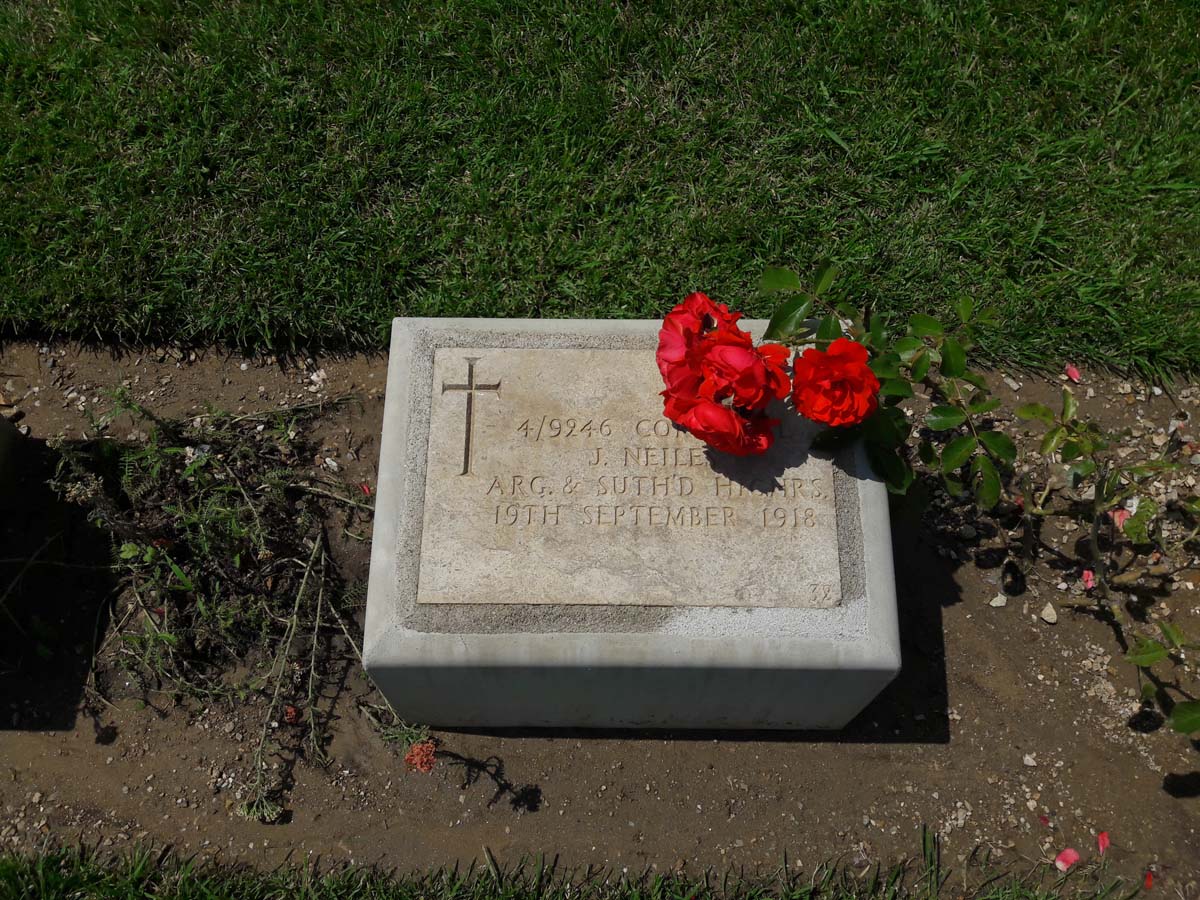This website uses cookies so that we can provide you with the best user experience possible. Cookie information is stored in your browser and performs functions such as recognising you when you return to our website and helping our team to understand which sections of the website you find most interesting and useful.

Commonwealth military cemetery in Doirani
It is located near the southeastern coast of Doirani lake and to the west of the homonymous village. Most of the burials took place after the battles of April and May 1917, as well as the battle of September 18-19, 1918. The cemetery was designed by the British architect, sir Robert Lorimer. It includes mostly “commonwealth” burials, but there is also the grave of a French soldier, as well as graves of 45 Greek soldiers. The complex has been placed on a natural hill and is surrounded by a rectangular stone-built wall.
The burials are placed in consecutive rows with absolute symmetry and are marked by low concrete slabs, on which the names of the dead soldiers and their battalion are inscribed. For non-identified dead soldiers there is the inscription “A soldier of the Great War known to God”. Two sculptures-heroa are included in the cemetery. The first one is placed immediately after the entrance to the site, in a rectangular projection of the enclosure. It is a marble altar featuring the inscription “Their name liveth for evermore”. The second is also located on the central axis of the entrance, at a fairly high elevation point, and it is a tumulus by a stone pile (cairn) equipped with a cross on its top.



